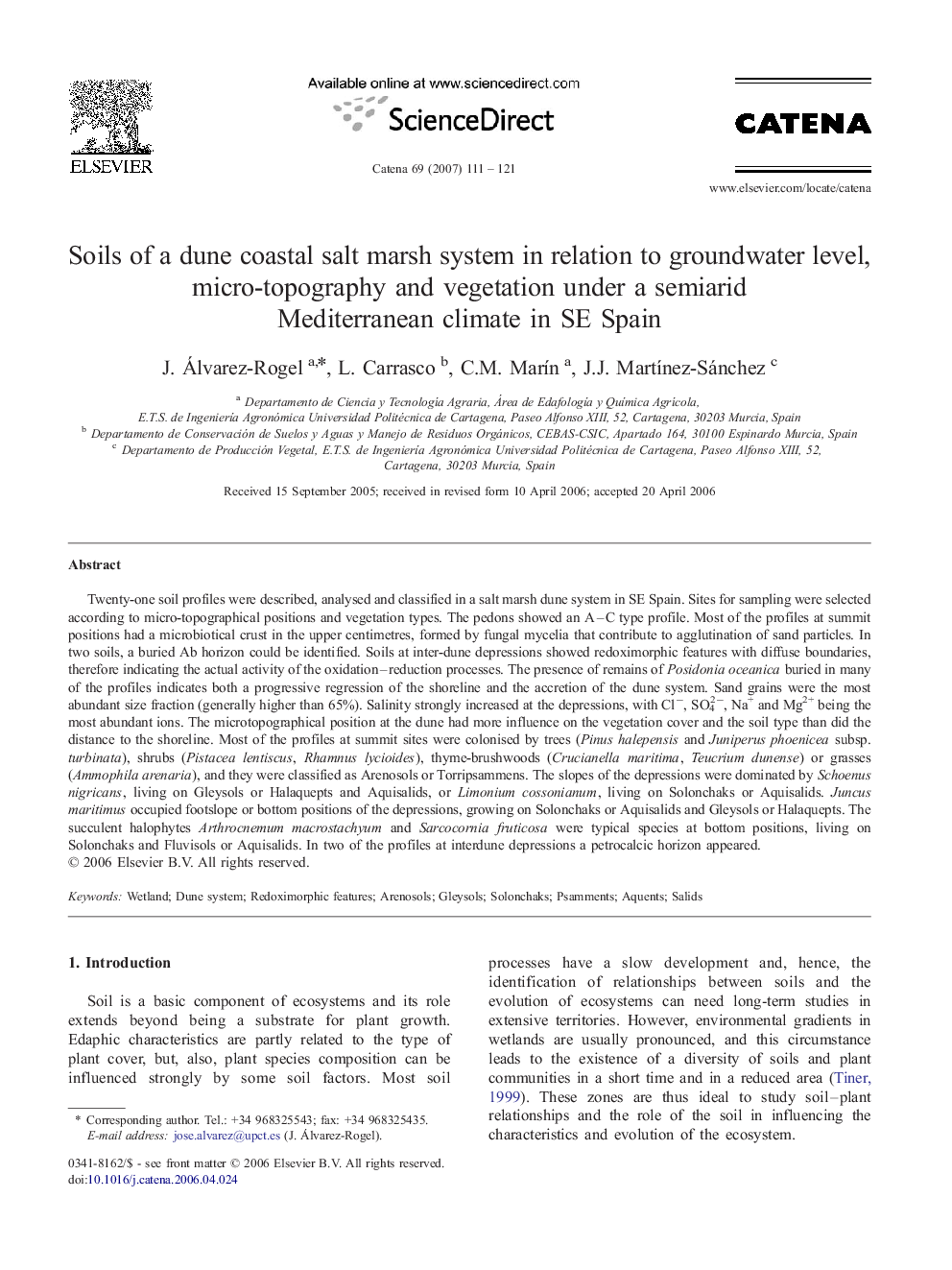| کد مقاله | کد نشریه | سال انتشار | مقاله انگلیسی | نسخه تمام متن |
|---|---|---|---|---|
| 4572677 | 1332192 | 2007 | 11 صفحه PDF | دانلود رایگان |

Twenty-one soil profiles were described, analysed and classified in a salt marsh dune system in SE Spain. Sites for sampling were selected according to micro-topographical positions and vegetation types. The pedons showed an A–C type profile. Most of the profiles at summit positions had a microbiotical crust in the upper centimetres, formed by fungal mycelia that contribute to agglutination of sand particles. In two soils, a buried Ab horizon could be identified. Soils at inter-dune depressions showed redoximorphic features with diffuse boundaries, therefore indicating the actual activity of the oxidation–reduction processes. The presence of remains of Posidonia oceanica buried in many of the profiles indicates both a progressive regression of the shoreline and the accretion of the dune system. Sand grains were the most abundant size fraction (generally higher than 65%). Salinity strongly increased at the depressions, with Cl−, SO42−, Na+ and Mg2+ being the most abundant ions. The microtopographical position at the dune had more influence on the vegetation cover and the soil type than did the distance to the shoreline. Most of the profiles at summit sites were colonised by trees (Pinus halepensis and Juniperus phoenicea subsp. turbinata), shrubs (Pistacea lentiscus, Rhamnus lycioides), thyme-brushwoods (Crucianella maritima, Teucrium dunense) or grasses (Ammophila arenaria), and they were classified as Arenosols or Torripsammens. The slopes of the depressions were dominated by Schoenus nigricans, living on Gleysols or Halaquepts and Aquisalids, or Limonium cossonianum, living on Solonchaks or Aquisalids. Juncus maritimus occupied footslope or bottom positions of the depressions, growing on Solonchaks or Aquisalids and Gleysols or Halaquepts. The succulent halophytes Arthrocnemum macrostachyum and Sarcocornia fruticosa were typical species at bottom positions, living on Solonchaks and Fluvisols or Aquisalids. In two of the profiles at interdune depressions a petrocalcic horizon appeared.
Journal: CATENA - Volume 69, Issue 2, 1 March 2007, Pages 111–121